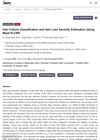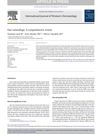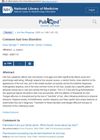A Study on the Development of a Web Platform for Scalp Diagnosis Using EfficientNet
August 2024
in “
Applied Sciences
”
TLDR A web platform was created to help diagnose scalp conditions accurately and easily.
The study developed a web platform for scalp diagnosis using the EfficientNet-B0 model, focusing on conditions like fine dandruff and perifollicular erythema. The platform achieved diagnostic accuracy rates of 75% for fine dandruff and 82% for perifollicular erythema, allowing users to upload images for real-time analysis and personalized care recommendations. The model was trained using a dataset of 7,300 images for fine dandruff and 6,518 images for perifollicular erythema, employing transfer learning and data augmentation to address class imbalance. User feedback from 20 participants indicated high satisfaction with usability and design. Despite its promise, the platform's accuracy could improve with a larger, more diverse dataset and advanced data augmentation techniques. Future research aims to enhance real-time diagnostic capabilities and expand the dataset for better performance.




